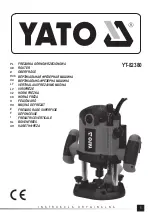
AT&T Velocity – User Guide – Prepaid
AT&T Velocity – User Guide – Prepaid
Caution:
Changes or modifications not expressly approved by
the manufacturer could void the user’s authority to operate the
equipment.
Note:
This equipment has been tested and found to comply
with the limits for a Class B digital device, pursuant to part
15 of the FCC Rules. These limits are designed to provide
reasonable protection against harmful interference in a
residential installation. This equipment generates, uses and
can radiate radio frequency energy and, if not installed and
used in accordance with the instructions, may cause harmful
interference to radio communications. However, there is
no guarantee that interference will not occur in a particular
installation. If this equipment does cause harmful interference
to radio or television reception, which can be determined by
turning the equipment off and on, the user is encouraged to
try to correct the interference by one or more of the following
measures:
• Reorient or relocate the receiving antenna.
• Increase the separation between the equipment and receiver.
• Connect the equipment into an outlet on a circuit different
from that to which the receiver is connected.
• Consult the dealer or an experienced radio/TV technician
for help.
CTIA Requirements
a) Do not disassemble or open, crush, bend or deform,
puncture or shred.
55
Regulatory and Safety Information
Regulatory and Safety Information
54
b) Do not modify or remanufacture, attempt to insert foreign
objects into the battery, immerse or expose to water or other
liquids, expose to fire, explosion or other hazard.
c) Only use the battery for the system for which it is specified.
d) Only use the battery with a charging system that has
been qualified with the system per CTIA Certification
Requirements for Battery System Compliance to IEEE 1725.
Use of an unqualified battery or charger may present a risk of
fire, explosion, leakage, or other hazard.
e) Do not short circuit a battery or allow metallic conductive
objects to contact battery terminals.
f) Replace the battery only with another battery that has been
qualified with the system per this standard, IEEE-Std-1725.
Use of an unqualified battery may present a risk of fire,
explosion, leakage or other hazard.
g) Promptly dispose of used batteries in accordance with local
regulations.
h) Battery usage by children should be supervised.
i) Avoid dropping the phone or battery. If the phone or battery
is dropped, especially on a hard surface, and the user
suspects damage, take it to a service center for inspection.
j) Improper battery use may result in a fire, explosion or other
hazard.
For those host devices that utilize a USB port as a charging
source, the host device's user manual shall include a statement
that the phone shall only be connected to CTIA certified
adapters, products that bear the USB-IF logo or products that
have completed the USB-IF compliance program.



































